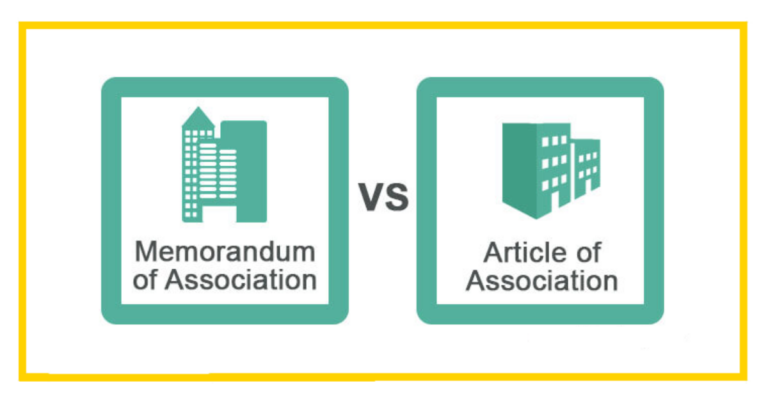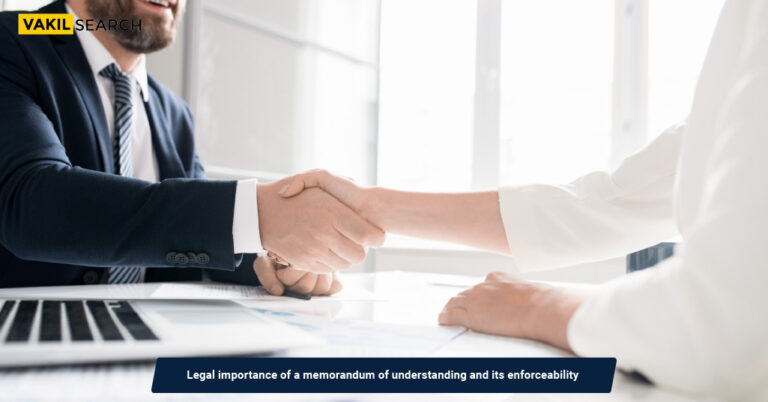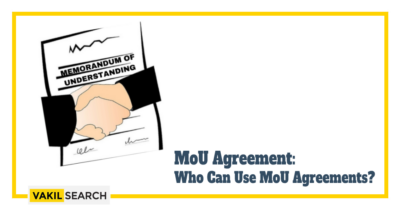When two or more parties start a conjoined effort, certain things need to be palatably presented, such as demands, expectations, and goals.
Introduction
A Memorandum of Understanding, though not a legal document, is a valid and unequivocal agreement of purpose and acknowledgment of the concordant motives of both (or more) parties who agree. The impetus that sets off a task in its line of action is based on the contents of the Memorandum of Understanding, in the way of concurrence or accordance with the aims of the mutually signed understanding, that in turn reflects the purpose of many business opportunities negotiations and pacts of that order. Let us see the process of Signing of a Memorandum of Understanding
When two or more parties start a conjoined effort, certain things need to be palatably presented, such as demands, expectations, goals, and the likes. This helps everyone involved in the project know what to expect and what to work on to expect support and avoid unfortunate internal discrepancies which could lead to the falling through of the concerning project or its plan of action.
Process of Signing of a Memorandum of Understanding
Specific obvious pre-requisites and guidelines are listed involved in signing a Memorandum of Understanding by two or more parties.
The terms and conditions, though essential but an official declaration of the collaboration, are as follows:
- Signing of a Memorandum of Understanding, the parties shall mutually agree on the project’s intent without coercion and out of their free will to work together on a common plan.
- Before the discussion about the subject or plan of action begins, the schedule involves the signing of a confidentiality document or a non-disclosure agreement in some instances, if the proceedings or the project is not for everyone to know, or some aspects of information about the same, need to be withheld. This could be in the interests of either party.
- However, mutual respect and consideration are expected.The beginning of a plan could bring to the fore the multi-faceted characteristics of a project born out of a coalition of thoughts and processes of two or more parties. Hence, the Memorandum of Understanding also ensures that both parties agree to incorporate the exchanged information into the discussion to encourage a broader purpose to the project they have jointly agreed to see to completion.
Moving on, this makes discussing the contents of a Memorandum of Understanding imperative.
Contents of a Memorandum of Understanding
An MOU typically outlines the agreement’s scope, actions to be taken, project details, involved parties’ names, and their responsibilities. It also specifies the duration of the agreement, its start date, and conditions for termination. Contact details for all parties and potential dates for performance evaluation might also be included.
To craft an effective MOU, all involved parties must agree on the terms and clearly understand their roles and responsibilities.
While MOUs are generally non-binding, they can contain legally enforceable clauses, potentially holding a party liable for violations. Key elements that might make an MOU legally binding are:
- A proposal
- Agreement to the proposal
- Intent to establish legal obligations
- Exchange of value
Features of a Memorandum of Understanding (MoU)
- The Memorandum of Understanding (MoU) clearly outlines the agreement’s terms and the project’s objectives, ensuring no ambiguity.
- It highlights the coalition’s purpose and the anticipated outcomes.
- The MoU must contain clear language, key points of interest, and the intent of the project and the involved institutions.
- It specifies the essential identity details of all parties involved, including organization names, locations of operation, countries, and any third-party vendors associated with the companies.
- A minimum set of information required from each party includes the name of the organization, headquarters or office locations, and countries of operation.
- The agreement should define a fixed or predetermined tenure for the project, emphasizing that the coalition is not indefinite and is subject to a specified term.
- Post the agreed term, parties are not obligated to adhere to the MoU.
- The MoU should outline a timeline for the project, ensuring it is completed before the tenure expires.
- Entering an agreement and signing an MoU may require significant time and financial investment; details of the financial contributions by each party should be included and regularly updated.
- With multiple parties involved, there’s a need for mutual accountability to ensure transparency and understanding of ongoing situations.
- Responsibilities should be assigned to foster an efficient partnership and joint efforts in addressing any issues that may arise.
- The MoU should address risk-sharing, as risks in business ventures can affect all parties involved, making risk management a collective goal.
- Unforeseen risks and contingencies should be acknowledged, with a plan for damage control requiring collaborative support.
- Each party, or their representatives, must sign the MoU to signify their agreement and acknowledgement of any legal clauses or responsibilities.
- The MoU should detail the collaborative nature of the venture, including shared outcomes, goals, and the division of labour among parties, along with assigned timelines.
- In case of disputes or disagreements, a disclaimer should be included, emphasizing the commitment of all parties to honesty, transparency, and adherence to guidelines to prevent project derailment
Uses and Advantages of a Memorandum of Understanding
Due to the multiplicity of memorandums of understanding signed, by organisations and enterprises, in different sectors of governmental and private firms that adhere to the laws of the land to remain relevant wherever they are to be pursued, practised, and executed.
In the private sector, the memorandum of understanding states the requirements, agenda, goals, and vision of the undertaken project are discussed as an official testimony to the mutually agreed pact the companies, institutions, or individuals have entered with each other. It also regards the risks, responsibilities and financial investments, and delegation of work as well as the reaped profits as agreed upon by the participating companies. It majorly accounts for and denotes a private capital and profit encashed from the project.
While the governmental agreement of signing a memorandum of understanding (between the government/ state and one or more parties). This also includes the content as mentioned above and clauses. However, this might be in the interest of the government and private companies in the agreement.
The memorandum of understanding has its share of advantages for those involved in terms of ease of accessibility to work, efficient transmission and exchange of information, and the target audience for the results achieved due to the conglomeration of the group project.
∙ The responsibilities, risk handling, and financial investments are irrefutably explained and indisputably intimated in the contents.
∙ Better than a verbal commitment but less time-taking and hassle-free than legal proceedings involved for the same.
∙ Ensures adherence to the international law that all memorandums of understanding fall under
∙ It acts as both a testimony/ proof in case something needs to be looked at again or a reference for work/ fund delegation purposes.
Conclusion – Process of Signing of a Memorandum of Understanding
Thus, a Memorandum of Understanding covers the most vital aspect of the partnership- communication. The transparency involved in the execution and pursuit of the business ventures that the concerning companies are seeking to achieve necessitates the very lever that, when turned, pushes the project to completion. Thus, keeping personal and the coalition’s interests in mind, a memorandum of understanding, is quite the deal when drafting and keeping a record of progress and developments made on the way. With Vakilsearch, you can make an MoU in the most hassle-free manner. Get in touch with our experts today to know more about the process involved. Hope this blog regarding Process of Signing of a Memorandum of Understanding was helpful.
FAQs
How do you make an MOU legally binding?
To make an MOU legally binding, it must include essential contractual elements such as a clear offer, acceptance, intention to create legal relations, and consideration (something of value exchanged between the parties).
Can an MOU be cancelled?
Yes, an MOU can be cancelled if both parties agree to terminate it or if the MOU includes specific termination clauses that are met.
How do I terminate an MOU?
To terminate an MOU, parties should follow the termination procedures outlined in the MOU itself, which may include providing notice within a certain timeframe or meeting other conditions agreed upon.
Is an MOU valid in court?
An MOU can be valid in court if it contains all the elements of a contract and is intended to be legally binding. However, if it's intended as a non-binding document, it may not be enforceable.
What documents are needed for an MOU?
Typically, you need basic information about the parties involved, the scope of the agreement, responsibilities, duration, and any specific terms or conditions. Additional documents may be required based on the MOU's complexity and context.
What are the guidelines for a memorandum of understanding?
Guidelines for an MOU should include clear language, a description of the purpose, roles and responsibilities, terms and duration, dispute resolution mechanisms, and termination procedures.
What is the validity period of an MOU?
The MOU is set to become effective on the date it is signed. It will stay active for a duration of three years. Should neither party provide a written notice of their intent to end the MOU at least six months in advance, it will automatically renew for additional three-year terms.
Read also;











